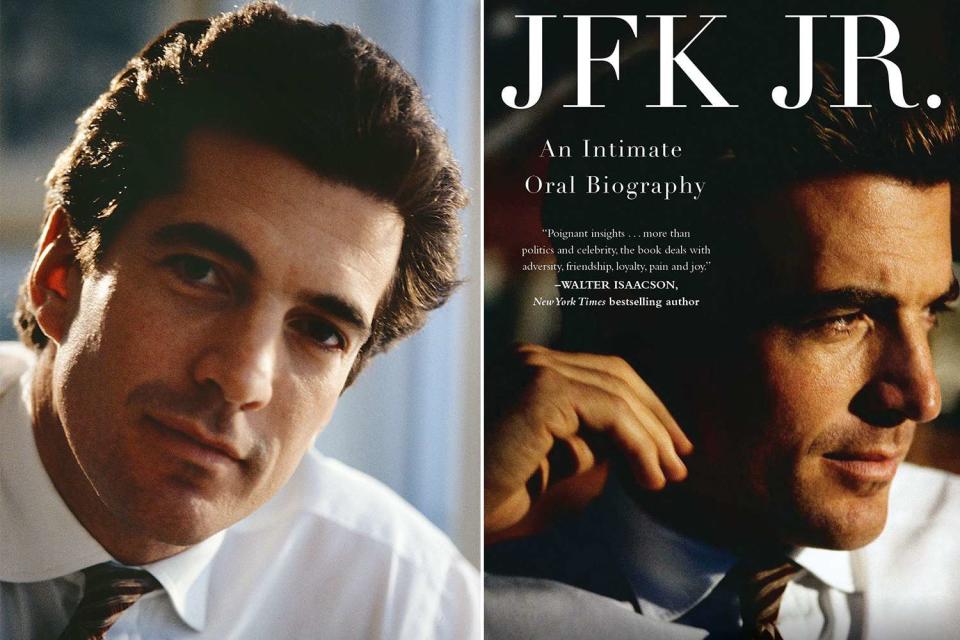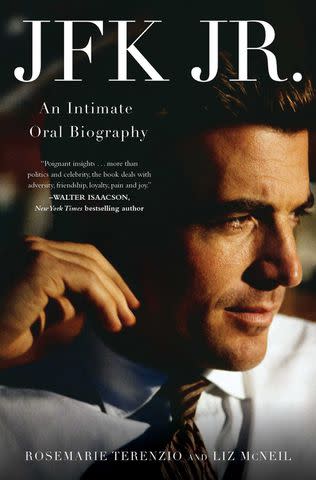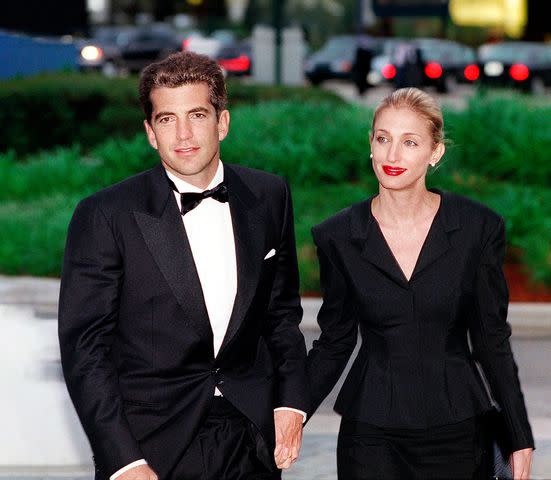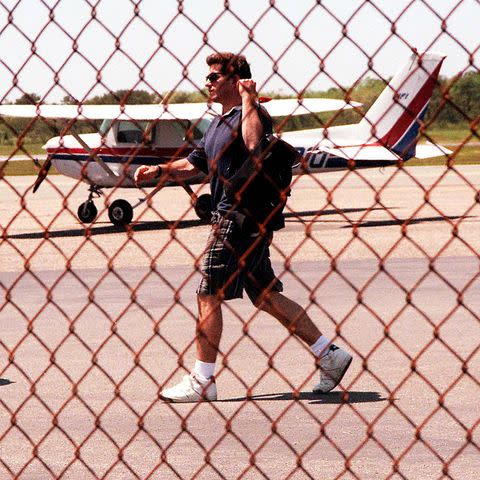JFK Jr.’s Shocking Plane Crash Death at 38: What Really Happened When the Plane Went Down (Exclusive)
An official from the National Transportation Safety Board explains why the plane crashed that night, killing all three passengers on board

Anne Marie Fox; Simon & Schuster
JFK Jr. in a portrait for George Magazine and the book cover for "JFK Jr.: An Intimate Oral Biography"John F. Kennedy Jr.'s plane went down 25 years ago on July 16, 1999, killing him, as well as his two passengers, wife Carolyn, 33, and her sister, Lauren Bessette, 34. He was 38 years old.
Now a new book, JFK Jr.: An Intimate Oral Biography, by RoseMarie Terenzio and Liz McNeil, an editor-at-large at PEOPLE, excerpted exclusively in this week’s issue, reveals an in-depth look at the late president’s son and the events leading up to that fateful evening.
The plan was for John to fly his Piper Saratoga plane, which he had purchased that spring, to Martha’s Vineyard to drop off Lauren, and then continue on to Hyannis Port, Mass., where he and Carolyn planned to attend his cousin Rory Kennedy's wedding the next day.

Simon & Schuster
The cover of "JFK Jr.: An Intimate Oral Biography" by Liz McNeil and RoseMarie TerenzioFor more on John F. Kennedy Jr., pick up the latest issue of PEOPLE, on newsstands Friday, or subscribe here.
On July 16, after working at the office of his magazine George, John met Lauren at 6 p.m. for the drive to Caldwell Airport in New Jersey, where they met Carolyn, who arrived via a car service. By the time the plane took off at 8:38 p.m., the sun was setting and the already hazy conditions had further deteriorated.
The National Transportation Safety Board determined the “probable cause(s) of this accident to be the pilot’s failure to maintain control of the airplane during a descent over water at night, which was a result of spatial disorientation. Factors in the accident were haze and the dark night.”
Related: John F. Kennedy Jr.'s Death: The Details Behind His Tragic Plane Crash and Its Aftermath
The Piper Saratoga was a more complex and powerful plane than his previous plane, a Cessna, and John was in the middle of his instrument training. He was not yet rated to fly solely by cockpit instruments when flying in low visibility or adverse weather.
John followed the Connecticut and Rhode Island coastline that night and then turned out to sea towards Martha’s Vineyard.

Justin Ide
John F. Kennedy Jr. and Carolyn Bessette Kennedy on May 23, 1999.Jeff Guzzetti, now president of Guzzetti Aviation Risk Discovery, was an NTSB investigator at the time, working with the Office of Aviation Safety as part of the team that examined the wreckage. He shares his perspective in the book about what happened.
“The weather conditions were technically visual flight rules (VFR), even though it was hazy,” says Guzzetti. “He had enough visibility in miles to make the flight legally. But as soon as he turned out to the black ocean with three to five miles of visibility in haze, it might as well be instrument flight rules (IFR) — meaning you must scan your instruments and that tells you whether your wings are level or if you are climbing or descending. He was trained to look outside to get his visual cues. There were no visual cues.”
In the last 30 miles, as John began his descent to Martha’s Vineyard, his flight path became irregular and was indicative of “spatial disorientation.”
“His flight path into the water is consistent with what is known as a graveyard spiral,” says Guzzetti. “The airplane makes a spiral nose down . . . kind of like going down a drain. The plane went into one final turn and it stayed in that turn pretty much all the way down to the ocean.”
The plane crashed into the water about seven miles from Martha’s Vineyard.

Laura Cavanaugh/ZUMA
JFK Jr. with his airplane "Piper Club"“In my personal opinion, I don’t think the passengers knew what was happening to them," says Guzzetti. "They might have felt a little G-force pushing them down in their seats. You would’ve heard the rush of air over the fuselage accelerate or get louder, during the final fatal plunge . . . And then they hit the surface of the water and it’s over.”
As for Kennedy, he says, “I would expect that the pilot would be very confused and perhaps a little frightened because the instruments may have not been matching up with how he was feeling . . . The impact forces were tremendous.”
Guzzetti concludes, “In the end, it’s a cautionary tale for any private pilot to understand your own personal limitations.”
JFK Jr.: An Intimate Oral Biography by RoseMarie Terenzio and Liz McNeil comes out July 16 and is available for preorder now, wherever books are sold.
For more People news, make sure to sign up for our newsletter!
Read the original article on People.

 Yahoo News
Yahoo News 
